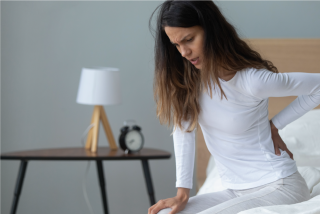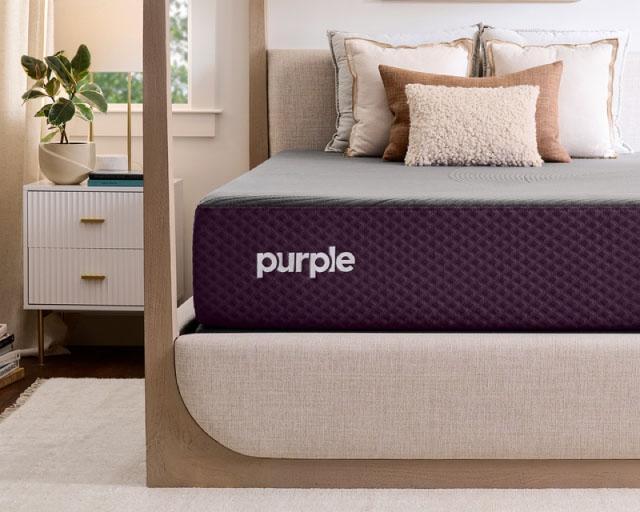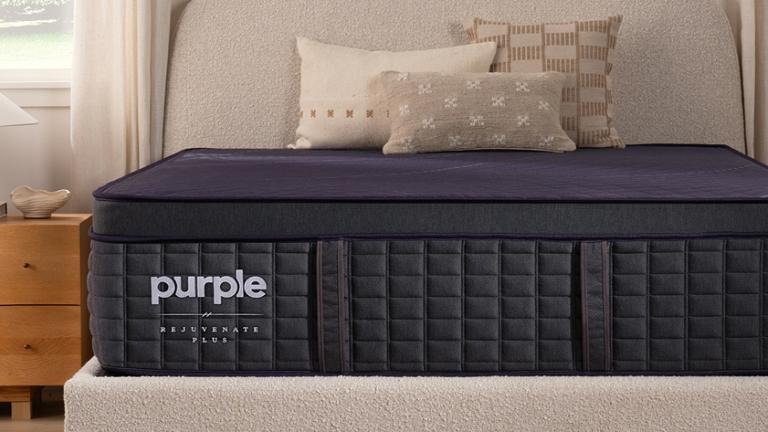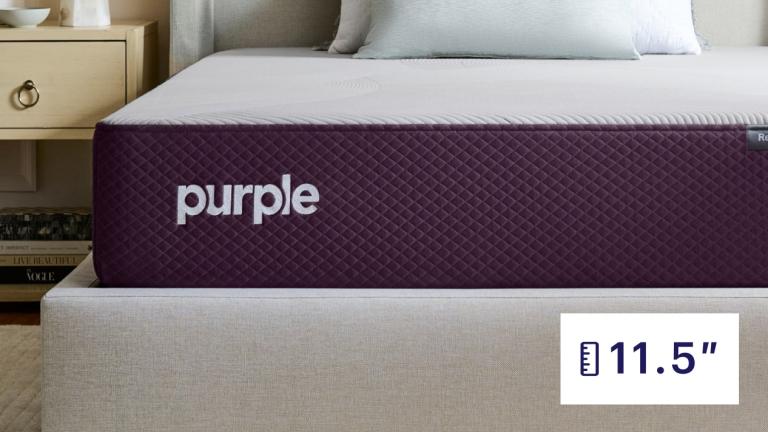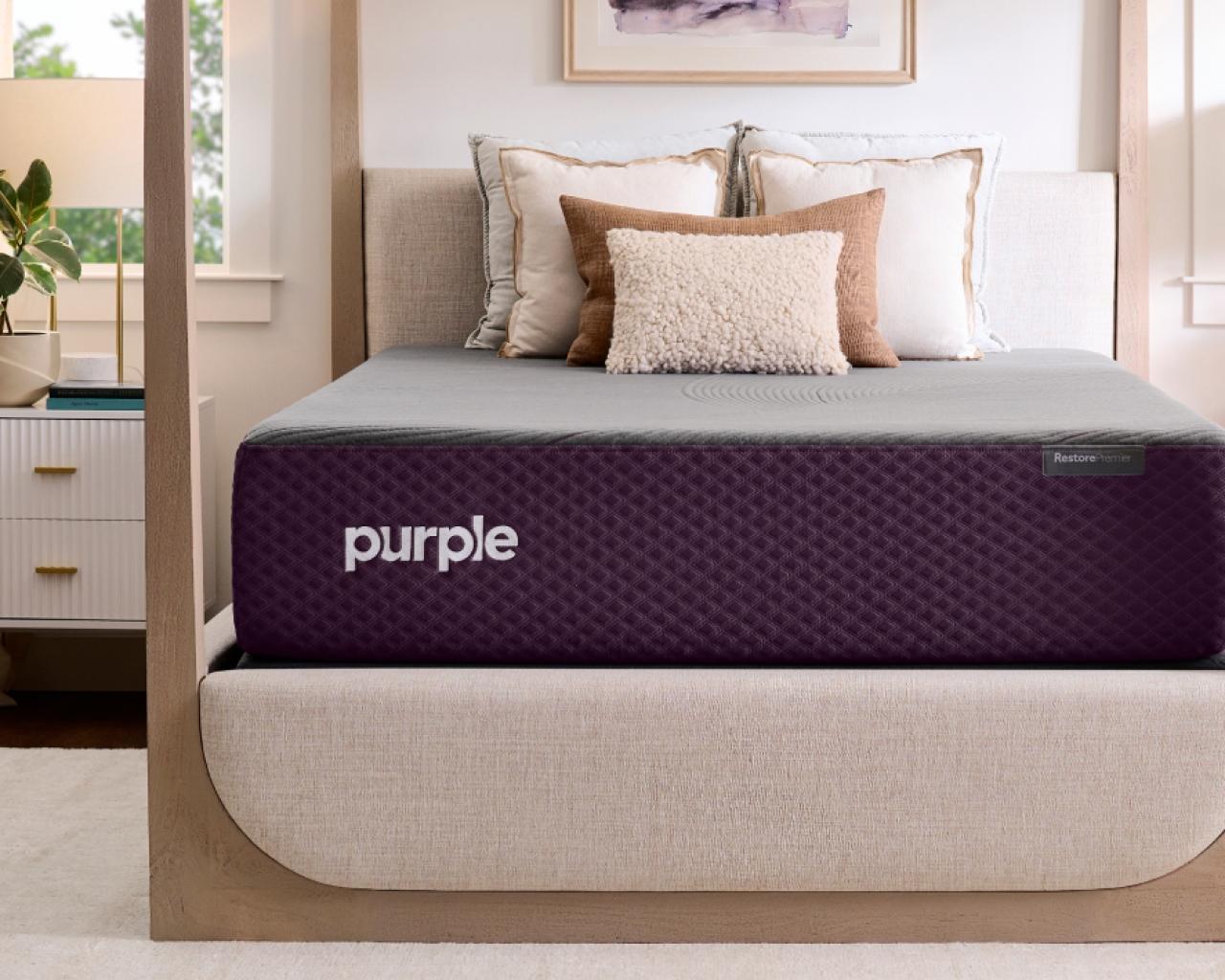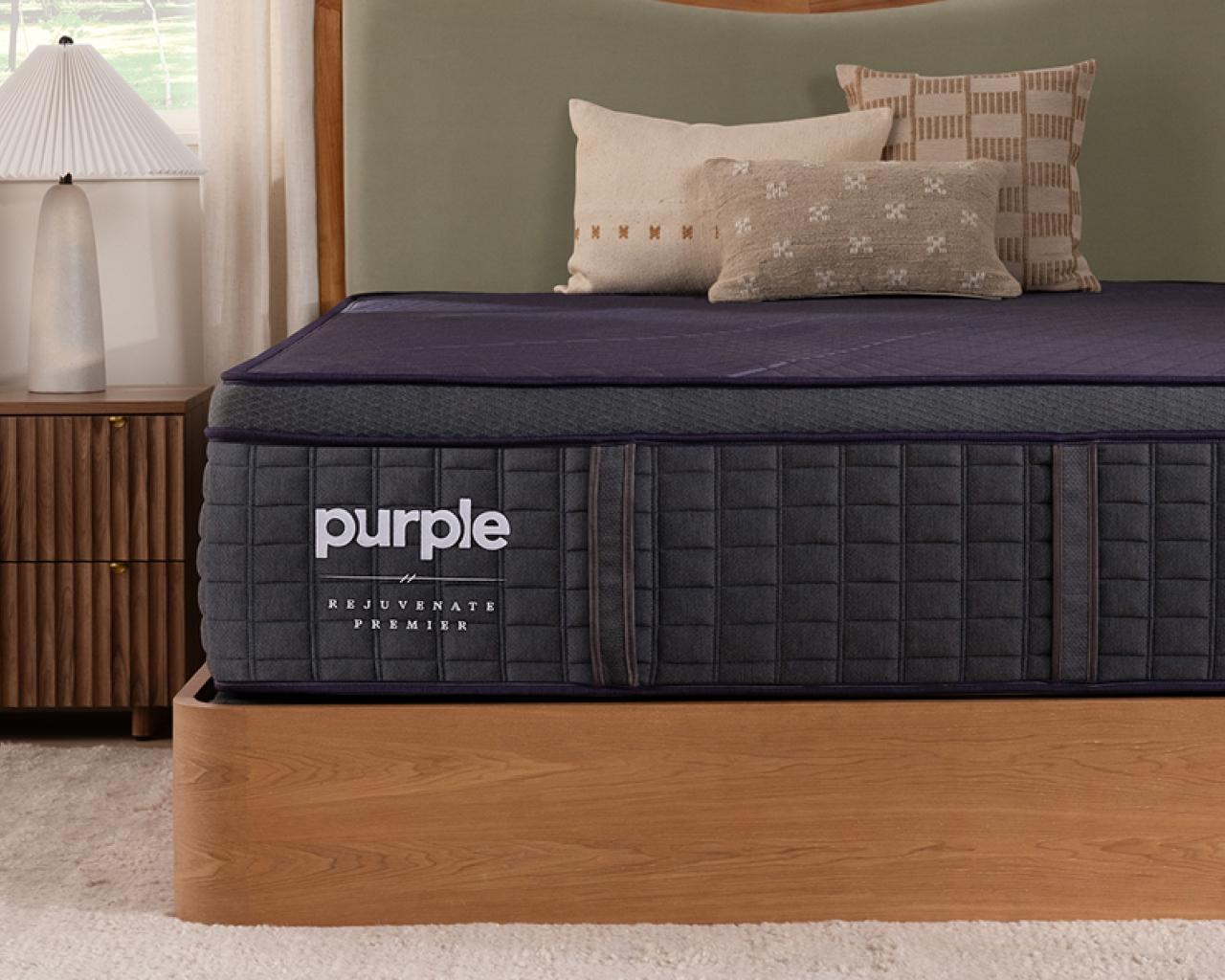
How To Sleep on Your Back: 7 Tips To Train Yourself
Key Takeaways
- Back sleeping can help relieve sinus pain, nasal congestion, tension headaches, joint pain, and spinal issues.
- You can train yourself to sleep on your back with proper support from your mattress and pillows.
- Sleeping on your back may not be right for people who are pregnant or those with certain sleep conditions.
Your sleep posture is an integral component that contributes to getting a good night’s sleep. Yet, despite the many health advantages, most people don’t sleep on their backs.¹ If you’ve been a stomach or side sleeper your whole life, you might be wondering how to sleep on your back for a better night’s rest.
Back sleeping can help a wide array of people, including those with sinus pain, nasal congestion, tension headaches, joint pain, and spinal issues. But if you’ve slept on your side or stomach for as long as you can remember, it can be difficult to get in the habit of sleeping in a new position.
The truth is, learning how to sleep on your back will take a bit of time and practice — but it’s not impossible. In this guide, we’ll go over the seven steps to becoming a back sleeper and the benefits of doing so.
How To Train Yourself To Sleep on Your Back in 7 Steps
If you’re a side or stomach sleeper, sleeping on your back may sound strange and even uncomfortable.
To sleep on your back with ease, we recommend finding a supportive mattress, elevating your head, and placing pillows underneath your knees and lower back to reduce strain. These steps will help the body adjust to sleeping on your back faster.
Read on to continue learning how to make sleeping on your back more comfortable.
1. Invest in a Supportive Mattress
Your mattress is the most important component of good sleep. After all, its job is to support your body for comfortable rest. Before changing your sleeping position, ensure you’ve selected the right mattress for sleeping on your back.
A firm mattress may be better for back sleepers compared to plush mattresses. This is because firmer mattresses provide more support and stability that prevents you from sinking deep into the bed. This, in turn, can keep the spine in a neutral position.
Because of Purple’s patented GelFlex® Grid technology that provides the perfect flex and support based on the amount of weight applied, Purple mattresses deliver pressure relief for back sleepers with both firm and soft mattress preferences. The Purple RestorePlus™ Hybrid Mattress instantly adapts to any sleep position, so you’re supported when learning how to sleep on your back.
If you want to learn more about how to choose a mattress, read our guide.
2. Elevate Your Head
For back sleepers, it’s important to keep the lower back, hips, and neck properly supported. Not providing enough neck support can lead to headaches and a stiff neck.
Make sure your neck is in a neutral position that supports its natural curvature. An adjustable bed frame can incline at the head and feet to offer the right amount of support.
You should also keep in mind that the neck is naturally curved like a “C,” so your ideal pillow height should be enough to support your neck, but not too high that your neck becomes over-extended. The Purple Freeform™ Pillow allows you to customize your support with removable MicroFlex™ Moon Foam for made-for-you comfort.
3. Place a Pillow Under Your Knees
Sometimes, sleeping flat on your back with your knees unsupported can lead to knee and lower back pain. As such, sleep experts recommend placing a small pillow under the knees.
The pillow shouldn’t be too high so that it still allows your feet and ankles to lie on the bed. The Purple Harmony™ Anywhere Pillow gives you the comfort you need in a compact size. Plus, it offers temperature-balancing honeycomb GelFlex® Grid to keep you from overheating.
4. Support Your Lower Back
Considering poor sleep quality is associated with an increased risk of chronic back pain, ensuring proper lower back support while you sleep is crucial.²
Your spine, like your neck, has a natural curvature. When you lie flat on your back on the floor or a hard surface, you’ll notice a bit of space beneath your lower back. The perfect mattress should cradle your hips and shoulders while maintaining contact support with your lower back — a benefit that the GelFlex® Grid was specially engineered to deliver. Without this proper support, pain and stiffness can occur.
If your mattress fails to support the curvature of your body, a short-term fix can be achieved by knowing how to sleep on a pillow correctly. Place a small, thin pillow or a rolled-up towel in this area to support your lower back. A pillow that’s too thick or large may lead to more back pain.
5. Use Pillows To Stay in Place
If you tend to move around a lot when you sleep, staying on your back all night can be difficult on a regular night (not to mention when adjusting to a new sleep position).
Some back sleepers find that a barrier of pillows helps them stay in place throughout the night. It can even redirect them onto their back if they toss and turn.
Try tucking a few pillows around your arms and legs to make a pillow wall that keeps you from rolling over. You may need to stack multiple pillows on top of each other, depending on how much redirection your body needs.
6. Spread Your Arms and Legs
Like the name suggests, the starfish position entails having both your arms and legs splayed out, making you look like a starfish. This position might be best if sleeping with your arms straight down your sides makes you feel stiff and uncomfortable, as it can help relieve some pressure.
Be warned, though — spreading your arms and legs out is not recommended for couples who share a bed, except if you sleep on a bed that is big enough to provide ample space for both sleepers. Learn about other popular couples' sleeping positions here.
7. Try To Relax and Be Patient
Adjusting to a new sleep position can be tough considering comfortability is such a crucial part of getting a good night’s rest.
You may find yourself lying awake longer as your muscles get used to the new position. Try to be patient and avoid getting frustrated. Forming new habits takes time — the most important thing is that you get enough sleep to feel well-rested and energized the next day.
If you’ve given yourself time to adjust but are still struggling to sleep on your back, try some other tips for what to do when you can’t sleep.
Benefits of Sleeping on Your Back
Back sleeping is recommended by most sleep experts, as it’s often easier to maintain your spine’s neutral alignment in this position.
It can also keep you from applying undue pressure on the joints in your hip, knees, shoulders, and ribs. Some people with certain injuries and illnesses like arthritis, spondylosis, and scoliosis, are also required to sleep on their backs to speed up recovery or reduce pain.
If you’re not used to it, you may struggle to get comfortable in bed while sleeping on your back. While it’s not for everyone, becoming a back sleeper can bring positive changes to certain people. Here are some of the health and wellness benefits of sleeping on your back:
Promote Spine Health
Conditions such as IT band pain benefit from sleeping on your back, reducing stress and tension on your body. Becoming a back sleeper may help maintain your spine health long term, reducing your risk of neck and back pain from poor sleeping posture.
In fact, one study found that side lying and sleeping on your back may possibly help with neck and lower back pain.³ Sleeping on your back with a pillow under your knees may also reduce stress on your spine and maintain the natural curvature of your lower back.⁴
May Reduce the Risk of Wrinkles
Have you ever heard the age-old saying that sleeping on your back reduces wrinkles? Well, there may be some merit to it after all.
Some experts believe that sleeping on your face may hasten the development of wrinkles.⁵ Sleeping on your back prevents you from pressing your face against a pillow.
May Reduce Tension Headaches
Tension headaches can be caused by a variety of factors, including stress, poor posture, and sleep position. Interestingly enough, those who prefer stomach sleeping may be more prone to tension headaches.
Experts believe that sleeping on your back and keeping pressure off your neck may reduce chronic tension headaches.⁶
May Reduce Congestion From Allergies and Sinusitis
Sinus pain and congestion can keep you up at night. But sleeping on your back could help ward off these unwanted sinus symptoms.
Congestion tends to happen at night because blood flow collects in your sinuses. (If you’ve ever experienced heightened cold symptoms as soon as you lie down, you know this feeling.) When you sleep with your head elevated above your heart, it decreases the buildup of mucus, preventing sinus congestion.
Improve Sleep Quality and Daily Comfort
Over time, training yourself to sleep on your back can prevent excessive tossing and turning, improving your overall quality of sleep.
You can also use an adjustable bed frame to customize the way you sleep on your back for maximum comfort. Purple’s collection of adjustable bases allows you to add personalized comfort to your current bed frame.
When Sleeping on Your Back May Not Be Right for You
While there’s a myriad of wellness advantages to sleeping on your back, it's not for everyone. In some cases, it can lead to poor sleep quality, insomnia, and discomfort — essentially everything you’re trying to alleviate by sleeping on your back.
If the tips above fail to work and you’re experiencing a lack of sleep or pain, becoming a back sleeper may not be right for you.
Here are some signs that sleeping on your back is not right for you:
- May exacerbate snoring and obstructive sleep apnea: When people with sleep apnea sleep on their backs, their airways can become blocked or narrowed, making it harder for them to breathe at night. For the same reason, back sleeping can also make snoring worse, leading to poor quality sleep for the snorer and their partner.
- Not recommended during pregnancy: Not only is back sleeping uncomfortable for pregnant people in their third trimester, but it can also be dangerous, as it can reduce blood flow to the fetus. For pregnant people, side sleeping (particularly left-side sleeping) is the recommended position.⁷
- May increase the risk of sleep paralysis: Some research shows that sleeping on your back may be linked to sleep paralysis, along with stress, not getting enough sleep, and having an irregular sleep schedule.⁸ That said, you likely don’t need to worry about sleep paralysis while sleeping on your back if you don’t typically experience it.
- May increase heartburn and acid reflux symptoms: If you suffer from heartburn or acid reflux, back sleeping might not be right for you. Elevating your head may help prevent these issues, but sleeping on your back typically worsens these symptoms.
May cause increased back pain: Everyone’s body is different, and that means what might help alleviate pain for some could exacerbate it for others. If sleeping on your back causes more back pain, side sleeping might be better for you.
Purple Mattresses for Every Sleep Position
Whether you’re a lifelong side sleeper or looking to learn how to sleep on your back, Purple mattresses support your every move.
Training yourself to sleep on your back is entirely possible, but it’s not right for everyone. The most important sleep tip is to prioritize comfort. With a Purple mattress, you can experience comfort and support for a restful night’s sleep.
FAQ
Yes, sleeping on your back is generally considered good for you, as it can promote spine health, reduce back pain, and improve sleep quality. That said, sleeping on your back isn’t right for everyone and will vary from person to person.
While it’s possible to sleep on your back when pregnant, it’s not recommended after the first trimester as it can reduce blood flow to the fetus.
If you do sleep on your back early in your pregnancy, you should do so at an incline to avoid compressing major blood vessels. Use pillows or an adjustable bed frame to prop yourself up so you’re not sleeping completely flat.
After the first trimester, sleeping on your left side (with support pillows) is recommended. Consult with your doctor if you have any questions.
It can be hard for some people to sleep on their backs because it doesn’t feel “natural” to them. Most people have a preferred sleeping position, and if you’ve grown used to sleeping on your stomach or side, it may take you some time to get comfortable sleeping on your back.
Yes, training yourself to sleep on your back is entirely possible with a supportive mattress and pillow. If you find it uncomfortable, try elevating your head, lower back, and knees with pillows or an adjustable frame until it feels right.
It can take a few days to several weeks to train yourself to sleep on your back, but this depends on how quickly you adapt. It may be uncomfortable at first but should become easier and more comfortable the longer you keep at it.
More To Explore
Level up your sleep routine with our most-loved products.





